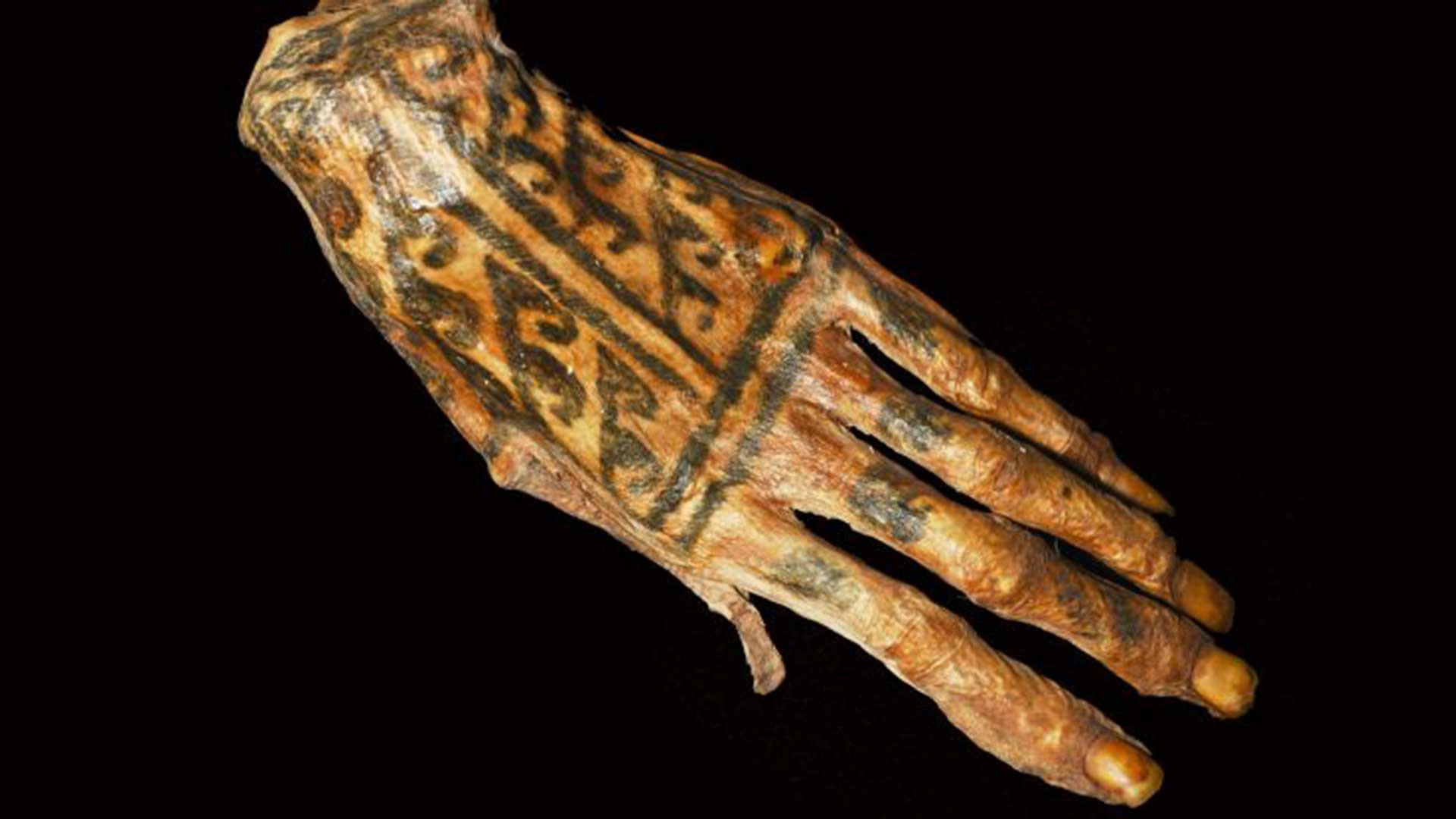Contents
The history of tattooing stretches back millennia, revealing that body ink isn’t just a modern trend. From icy glaciers to arid deserts, tattooed mummies tell a compelling story of this ancient art form.
 alt text: The tattooed hand of a mummified Chancay individual. Advanced laser imaging techniques reveal the intricate details of ancient tattoos.
alt text: The tattooed hand of a mummified Chancay individual. Advanced laser imaging techniques reveal the intricate details of ancient tattoos.
Ötzi the Iceman, discovered frozen in the Alps and dating back over 5,000 years, boasts 61 tattoos adorning his body. Around the same era, Predynastic Egyptian mummies also displayed tattoos: a wild ox and Barbary sheep on a male mummy’s arm, and S-shaped curves on a female mummy’s shoulder. Even further back in time, a 4,000-year-old Chinchorro mummy from Peru sported a delicate, tattooed mustache.
The prevalence of ancient tattoos across the globe suggests that the practice may have developed independently on various continents. As Nina Jablonski, an anthropology professor and author of Skin: A Natural History, explains, humans are observant. Accidental embedding of charcoal under the skin could have sparked the realization that permanent markings were possible.
Tattooing Across Cultures and Eras
Written accounts of Japanese tattoos appear as early as the 3rd century, with Chinese records predating even those. Many pre-Columbian Native American cultures practiced tattooing, including the Cree with their traditional chin tattoos. Archaeological discoveries further illuminate the practice: a 2,000-year-old tattooing tool found in Utah and 500-year-old Inuit mummies in Greenland bearing facial tattoos. Ancient Nubians, Filipinos, Britons, and Mayans also embraced this art form.
 alt text: Tattooing on the hand of a Chancay individual dating back 1,200 years. The intricate design demonstrates the skill of ancient tattoo artists.
alt text: Tattooing on the hand of a Chancay individual dating back 1,200 years. The intricate design demonstrates the skill of ancient tattoo artists.
Even in ancient Greece, where tattoos sometimes carried a stigma, the practice existed. Ptolemy IV, a Greek Macedonian ruler of Egypt, reportedly had ivy leaf tattoos honoring Dionysus. Greek historians like Herodotus documented tattooing among the Scythians and Thracians, where it signified nobility. Herodotus also recounted a tale of a tyrant who tattooed a secret message on a slave’s shaved head. Later, the Romans dubbed a Scottish tribe the Picts, meaning “painted ones,” due to their tattoos. During the Middle Ages, Crusaders often tattooed crosses on themselves, and extensive tattooing was common among Polynesians, the source of the word “tattoo.”
Sophisticated Ancient Techniques
The artistry of ancient tattoos is often surprisingly sophisticated. A 2025 study in the journal PNAS examined over 100 mummies from the Chancay civilization of Peru (circa A.D. 900). Researchers discovered incredibly detailed tattoos with lines as thin as 0.1 to 0.2 mm, surpassing the precision of some modern tattoo needles. These tattoos, likely created with cactus needles or sharpened animal bones, featured geometric patterns, floral designs, and even a monkey. The complexity of some designs suggests highly skilled tattoo artists and lengthy tattooing sessions.
The Meaning of Tattoos: From Healing to Identification
The reasons behind ancient tattooing were diverse. Some, like Ötzi’s, may have been therapeutic, similar to acupuncture. Others served as status symbols, talismans, or elements of religious rites. Tattoos could also denote group affiliation, adulthood, battle achievements, or personal expression.
However, tattoos have also been used for darker purposes. Ancient Greeks and Romans marked criminals and slaves with tattoos. The Japanese sometimes used facial tattoos to brand criminals. The Nazis tragically tattooed numbers on Holocaust victims.
Tattoos Today: A Resurgence of an Ancient Art
Tattooing’s popularity has fluctuated throughout history. The Roman Emperor Constantine banned them, and some religious groups, like observant Jews and Mormons, generally avoid them. Yet, in many parts of the world, including the United States, tattoos are experiencing a resurgence. A 2023 survey revealed that roughly one-third of American adults have at least one tattoo.
While Ötzi and the Predynastic Egyptian mummies currently hold the record for the oldest known tattoos (around 3300 B.C.), it’s likely that the practice predates even these discoveries, perhaps originating before civilization itself. As humans have adorned themselves with jewelry and created art for tens of thousands of years, using skin as a canvas for expression seems a natural progression.